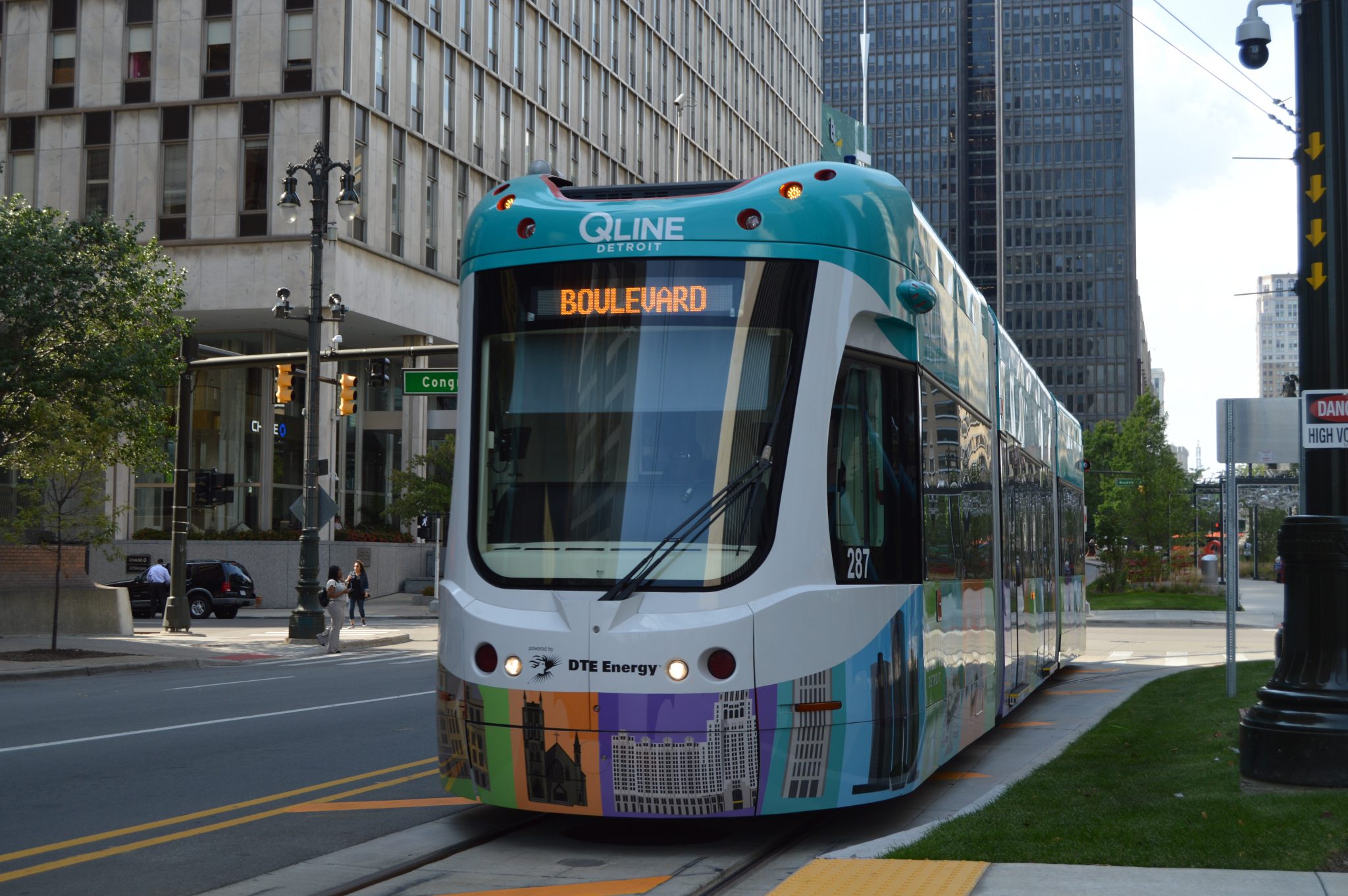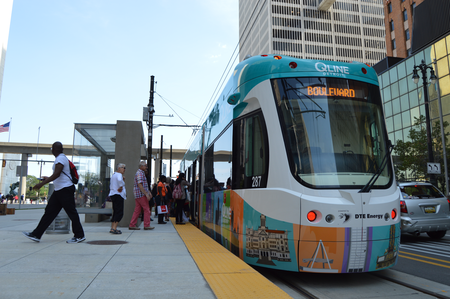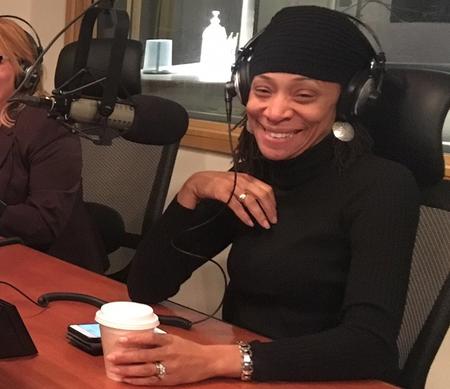From Bridge Magazine: A Review of the QLine [TRANSCRIPT]
Detroit’s streetcar is “most troubled than trusty” in its first year of operation.


Detroit’s new streetcar, the QLine, had just half the ridership needed to break even in its first 11 months of operation, according to a new report in Bridge Magazine.
Writer Chastity Pratt Dawsey found an average of 2,700 daily riders from November through March, which was down from the average of 4,322 passengers per day from May to October, when four of those months were free.
Bridge is WDET’s partner in the Detroit Journalism Cooperative.
Click on the audio player above to hear their full conversation. Here’s a transcript of it:
Sandra Svoboda: How bad were the delays this year for the QLine?
Chastity Pratt Dawsey: You had 267 stoppages. That’s five a week. When you’re stopping, your reliability goes down because people are like “I can’t get on. I can’t get where I’m going.” It’s all a problem when you can’t be a reliable system for commuters.
Sandra Svoboda: If you’re one of the riders that’s paused while you’re on the train when it’s happening, you probably have an impression that the line is not as efficient as it could be.

Chastity Pratt Dawsey: Well, when you’re standing there and it says the QLine will be there in 5 minutes and 5, 10, 15, 20 and it’s not there because it’s stopped. The reason they’re having so many stoppages, some of this is stuff they predicted and some of it they just weren’t prepared for. LCA, arena traffic. Horrendous. It stops the QLine. Snow. We had a lot of snow and the snow plow people, they plow the snow to the curb. People park outside of there, and now you’re in the QLine’s tracks. And also people are just not used to sharing the road with what looks like a train. All of that factors into a lot of stoppages, and it basically being an unreliable system and people not riding it if they don’t have to.
Sandra Svoboda: What are some of the fixes? What are officials from the QLine saying?
Chastity Pratt Dawsey: M1 rail is the nonprofit that runs it. We know it’s not publicly funded yet. It’s privately operated. What they’re saying is that they have been working for months with the city of Detroit, the Michigan Department of Transportation, as well as the vendors who do the snowplowing and towing and things of that nature. They’re learning on the job. They’re learning as they go. They’re saying April they had higher ridership than they had in earlier months, and they’re hoping that that means the fixes that they’ve put in place as far as trying to clear the path are working and that the second year will be better than the first.
Here’s more from WDET about regional transit this year:
Are Regional Transit Talks Doomed in 2018?
See Wayne County Executive Warren Evans’ Proposal for Regional Transit in SE Michigan [MAP]
Warren Evans Advocates for Transit: “It’s My Obligation as a Leader” [TRANSCRIPT]
Will New Regional Transit Plan Win Over Voters, Suburban Leaders?
Sandra Svoboda: Do we see at all that the culture or lack of culture surrounding mass transit in the region and the city is playing into the low ridership numbers.
Chastity Pratt Dawsey: Absolutely. It’s a lot of things. Again, first off, it’s 3.3 miles. It goes 30 miles an hour. It doesn’t really connect to anything outside of downtown and Midtown. People take it mostly for leisure and novelty and they’re not really taking it to get to work, to get somewhere as a reliable source of commuting. But again, when you’re talking about a street car. We haven’t had streetcars in Detroit for 50 years or more. People aren’t used to sharing the road. Just the culture of transit and dealing with this thing being on the road is new. It’s a new learning curve. People also think because it’s new transit and because it is being built and it came about at a time when we’re talking about regional transit, people expect it to be part of the regional transit debate that we’ve been having for 50 years. It sort of is but it sort of isn’t.
Sandra Svoboda: Why and why not?
Chastity Pratt Dawsey: When they built it and when they conceived it, it was shortly after Super Bowl XL. They said, “Oh, it would be so great if we had something that connected Midtown and downtown, and then it could spur economic development along this Woodward corridor, and then maybe it could spur regional transit.” The idea behind it, the attention behind it was to spur economic development and it was basically built in an area that was already bustling and becoming something. But when you talk to people who are involved in the regional transit conversation — Washtenaw, Wayne, Oakland, Macomb — The QLine doesn’t really come up. They’re talking about a $5 billion plan to take buses and even passenger trains across four counties, and the QLine is not really part of the conversation. It doesn’t go anywhere. But QLine people know that if we had regional transit that connected to the QLine then more people would ride the QLine
